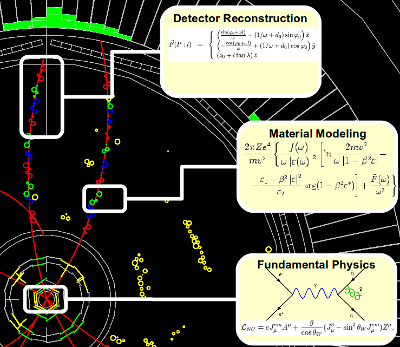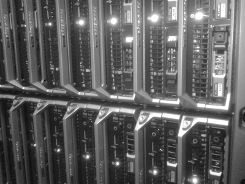Computing
Southern Methodist University provides a growing computing resource - the High-Performance
Computing (SMUHPC) system. The BaBar group is making significant use of this resource,
by both simulating fundamental physics processes and material interactions, and
analyzing BaBar data locally at SMU.
Simulation
There are three stages to simulation of collider physics events (see below): generating the fundamental particles and prompt decays, transporting subatomic particles through material (silicon, steel, etc.), and reconstruction of the event from the perspective of what the detector "sees." The SMUHPC system allows us to install BaBar software locally, performed this full simulation chain, and transmit over 7 million events back to the SLAC National Accelerator Laboratory every week. At this rate, SMU alone can simulate the equivalent of the full BaBar sample of B mesons (accumulated over 8 years) every 2 months. SMU is presently one of only four sites which are involved in general BaBar simulation work.


